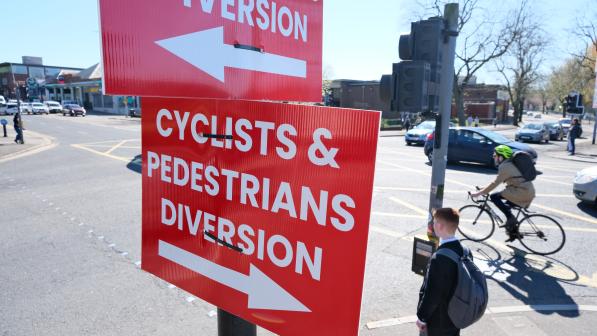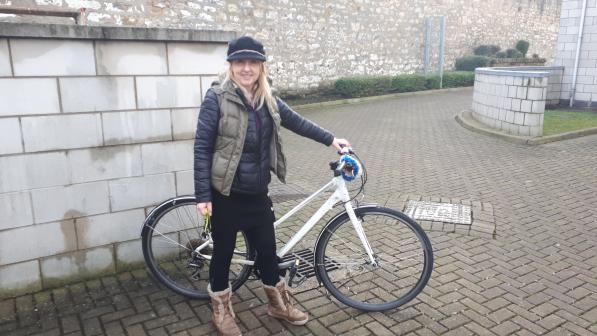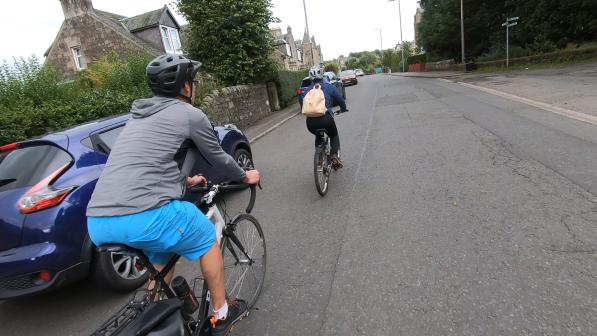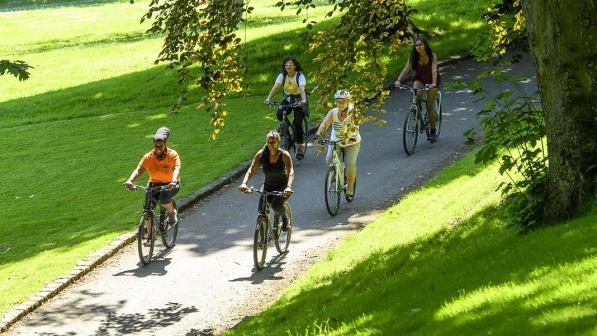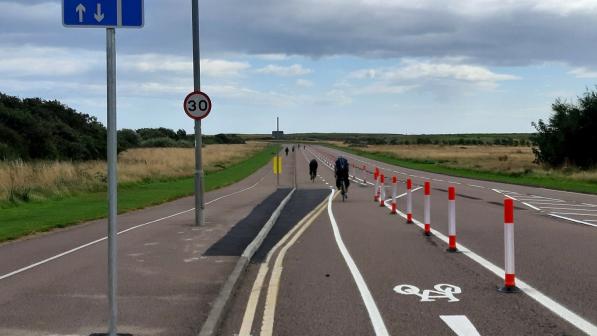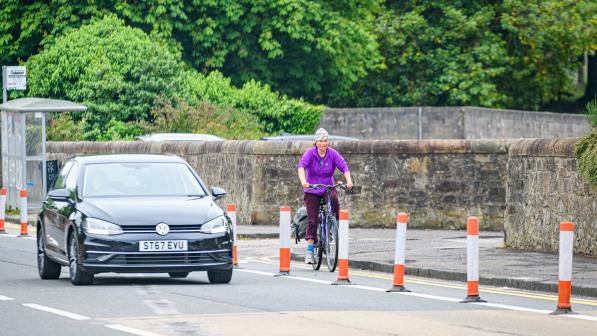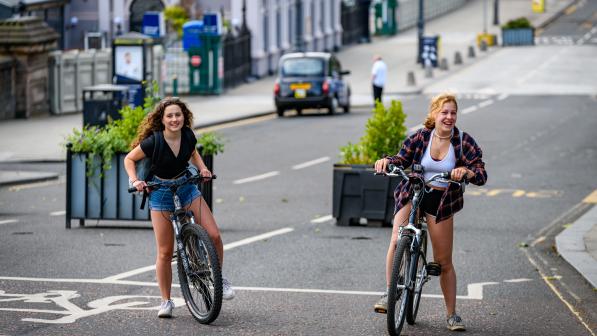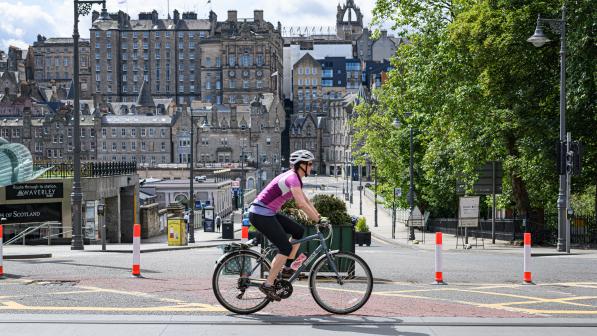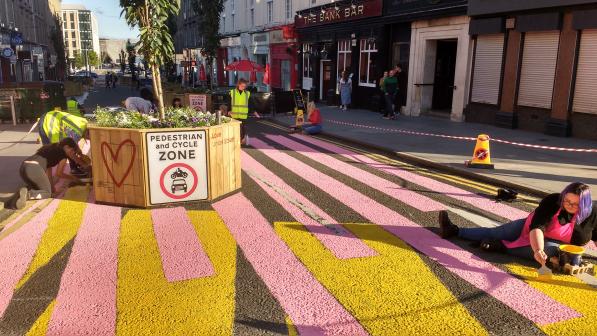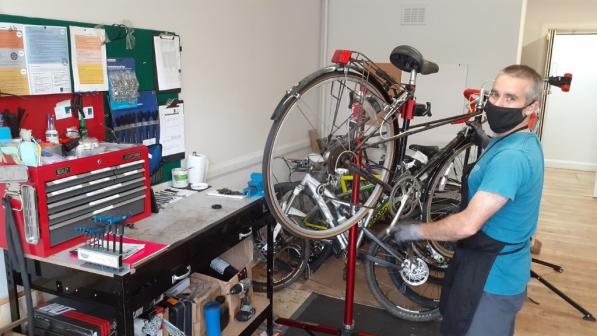Temporary infrastructure in Scotland – how does your council measure up?

Since early in lockdown, councils across Scotland have been making space on the streets to help people safely distance from one another whilst they are out walking and cycling. Transport Scotland helped this happen by providing £39m to the Spaces for People programme, administered by Sustrans Scotland.
I’ve spent the past week taking a look at council websites to assess their plans and progress towards getting temporary infrastructure on the ground. Jump ahead to the map below to see what I found for your area.
As you would imagine, with 32 councils there’s quite a variety both in progress and the types of measures they've chosen to implement. For example; cities like Glasgow and Aberdeen have created pop-up cycle lanes, roads have been closed in Dunbar and Fraserburgh, and 20mph limits have been placed on roads in hundreds of towns and villages.
20mph limits have been installed widely in Perth & Kinross, Aberdeenshire, East Lothian and Angus. In a huge rollout, the Scottish Borders Council has limited speeds to 20mph in 91 towns and villages. It's great to see, as only last year the Holyrood Parliament chose not to take legislation on 20mph forward.
We must keep sending positive and constructive messages to councils and councillors.
Some councils have acted quickly, with the infrastructure being well received, such as the colourful pedestrianisation of Union Street in Dundee. In other areas, progress is slower, and councils have yet to turn plans into places, or are still consulting residents. See the map below for progress in your area, and whether your council gets a green, amber or red rating.
During the past week, I have written to the leaders of all 30 councils in Scotland which were awarded funding from Transport Scotland’s Spaces for People fund. Only two councils, Orkney and East Dunbartonshire, didn’t secure funding for temporary infrastructure.
I wanted to thank them, on your behalf, for listening when hundreds of you wrote at the beginning of lockdown asking for temporary infrastructure near you. I also wanted to relay the urgency of completing their schemes, and to offer positive messages of support as they are installed.
The pop-up cycle lanes, closed roads and 20mph limits have been generally well received in Scotland so far. However, if there is local opposition, it’s important that we overwhelm it with positive reaction or we may lose the infrastructure we all fought for.
The design of some measures isn’t perfect, but the vast majority are helpful and those that aren’t can be improved. With tight budgets, we need to embrace Spaces for People as the way councils can help people keep up the cycling habit. There is also a great opportunity to make these measures permanent, so we must keep sending positive and constructive messages to councils and councillors.
What you can do
- Write to your council leader. The map below outlines what progress your council has made and how to contact them. Let them know that you welcome the measures and want to see them made permanent so that safe cycling can continue even after the coronavirus pandemic:
- Green – thank the council for its hard work and encourage them to do more for people who cycle.
- Amber – ask them to turn their plans into reality as soon as possible
- Red – remind them of the urgency to get measures installed.
- Use the temporary infrastructure. Take a photo in a pop-up cycle lane, on the closed road or with a new 20mph sign. Use social media to tell your council you welcome the measures.
- Write to your local paper. Write a positive message about measures local to you. Here’s a guide.
The information below displays; councils, the leader of the Council (and how to contact them), a description of planned measures, an indication of progress, and a link for more information. I have rated councils green, amber or red for their progress.
- Green indicates good progress has been made in installing measures, even if more is still to come.
- Amber indicates good plans, but lack of installing measures.
- Red indicates there is a lack of information, or slow progress.
You can check the Space to Move map to see what’s been installed, but bear in mind it may not be fully up to date.
If we can all take a few minutes to show our local councils that we support measures that encourage cycling, it will help to give them confidence that the community is behind their efforts. Thanks for getting involved.
